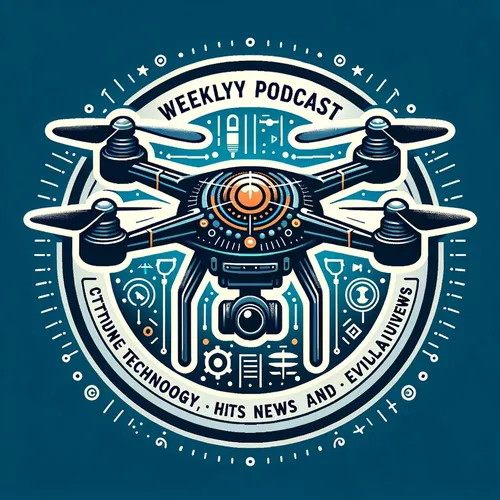From Turbo Drones to Hydrogen Power: The Juicy Scoop on the Latest UAV Buzz!
- Author
- Quiet. Please
- Published
- Tue 25 Feb 2025
- Episode Link
- https://www.spreaker.com/episode/from-turbo-drones-to-hydrogen-power-the-juicy-scoop-on-the-latest-uav-buzz--64558400
This is you Drone Technology Daily: UAV News & Reviews podcast.
In the rapidly evolving world of drone technology, the past 24 hours have seen significant advancements that are set to redefine the landscape of unmanned aerial vehicles (UAVs). One of the most notable developments is the unveiling of the Bayraktar TB2T-AI drone by Turkish firm Baykar. This next-generation drone integrates advanced artificial intelligence (AI) features and a turbo engine, enhancing its efficiency at high altitudes and speeds. The AI-powered flight capabilities allow the drone to identify and track targets, recognize different terrains, optimize real-time flight routes, and perform fully automated takeoffs and landings. The turbo engine enables the drone to reach a ceiling of over 30,000 feet in less than 30 minutes and increases its top speed to 160 knots[1].
On the consumer and enterprise front, the market for long-range drones continues to expand. The JOUAV CW-30E stands out with its impressive 200km range, making it a top choice for those needing drones that can cover vast distances. The Quantum Trinity Pro, with its 100km range and advanced terrain tracking features, is another notable option. These drones are designed to handle complex missions and offer reliable performance, making them valuable investments for many users[2].
Regulatory updates are also crucial for drone operators. In the United States, the Federal Aviation Administration (FAA) has outlined essential regulations for 2025. Commercial drone pilots must comply with FAA Part 107 regulations, which include obtaining a Remote Pilot Certificate, adhering to speed and airspace restrictions, and maintaining operational limitations. Recreational drone pilots must also follow specific guidelines, including flying in Class G airspace unless special approval is received and adhering to visual line of sight requirements[3].
In other news, Heven Drones has debuted a hydrogen-powered long-range UAV at IDEX 2025. The Raider drone is designed with a twin fuselage and vertical-take-off-and-landing capabilities, offering extended endurance and versatile payload options. The use of hydrogen power allows the drone to fly up to 1,000km and operate for around ten hours, making it a significant development in the field[4].
For drone enthusiasts and professionals, it is essential to stay informed about the latest technological advancements and regulatory updates. By understanding these developments, operators can ensure safe and efficient operations. Practical takeaways include the importance of selecting drones that meet specific operational needs and adhering to regulatory guidelines to avoid legal issues.
Looking forward, the future of drone technology is promising, with trends pointing towards increased use of AI and advanced propulsion systems. As these technologies continue to evolve, we can expect to see drones playing a more significant role in various industries, from surveillance and inspection to delivery and beyond. With the right knowledge and adherence to regulations, the potential of drones can be fully realized.
For more http://www.quietplease.ai
Get the best deals https://amzn.to/3ODvOta
